Oxford University Press's Blog, page 98
September 10, 2021
Studying cancer incidence in 9/11 first-responders: lessons learned for future disasters

This week on the 20th Anniversary of the 9/11 World Trade Center (WTC) disaster, we are provided with an opportunity to reflect on the lessons learned in the aftermath of this event and consider what can be done to reduce the health impacts of future disasters.
Our latest study of cancer incidence among rescue and recovery workers exposed to the WTC disaster on 9 September 2001 demonstrates the value of ongoing surveillance of chronic health effects. In the largest post-9/11 cohort of rescue and recovery workers (about 57,000) ever studied, we found the overall cancer incidence was lower than expected compared with the reference population from the New York State Cancer Registry. However, there were higher-than-expected incidences of melanoma, prostate, thyroid, and tonsil cancers. For the first time, we also found that the time when responders and rescue workers arrived on site made a difference in cancer risk: those who arrived on the day of the WTC attack had higher risk of prostate and thyroid cancers than those who arrived later in the week.
These findings reflect the work of the past two decades by a combination of policy makers, advocates, and clinical and public health scientists who made sure that important lessons learned from this disaster are not lost in the future.
What further studies are suggested by our research?Periodic follow-up of the cohort is indicated to further characterize the long-term impacts of cancer. More in-depth evaluation of several specific cancers is ongoing, including thyroid and prostate cancers, which were recently reported. Further investigation of cancer survival is necessary to better understand the factors leading to the apparent increased cancer survival of participants in the WTC Health Monitoring and Treatment program. Additional research into the impact of increased screening on this cohort is needed, as this may clarify the factors leading to increases observed in specific screening-sensitive cancers, such as thyroid and prostate cancer.
How and where could we be studying similar types of exposures?Historically, studies have focused on firefighters who are exposed to building collapses and fires as part of their regular work. Studies of the survivors of future natural disasters, including floods, hurricanes, and earthquakes, may be useful to evaluate the long-term effects of similar types of exposures given the increasing frequency of these types of events in the context of climate change.
Disasters involving building collapses, fires, and explosions have complex consequences that involve long-term physical and mental health aspects, in addition to the immediate effects of trauma, challenges of safe evacuation, cleanup, and economic fallout. Our studies over the past decades provide context to reflect on the health effects of the disaster 20 years after the attacks.
Starting in 2001, New York City funds, federal funds, and foundation grants supported setting up specific occupational and environmental health clinics to evaluate rescue and recover workers and survivors. These services evolved over the following decade, to create a network of periodic medical monitoring and treatment programs supported by the National Institute for Occupational Safety and Health (NIOSH). The WTC Health Registry was developed, beginning in 2002, with initial funding from the Federal Emergency Management Agency and current funding from NIOSH, to track the long-term health effects through an exposure-based cohort of over 70,000 rescue and recover workers, community members, students, teachers, children, and passers-by in Lower Manhattan on 9 September 2001.
The main physical health outcomes due to exposure to the 9/11 disaster include aerodigestive disorders, mainly chronic rhinosinusitis, gastroesophageal reflux disorder, asthma, sleep apnea, chronic obstructive pulmonary disease, and, early on, the “World Trade Center Cough.” Mental health disorders are also commonly diagnosed in this cohort, including post-traumatic stress disorder, major and atypical depressive disorders, panic disorder, and anxiety disorders, often overlapping with physical health outcomes. Studies of emerging conditions such as autoimmune disease, cardiovascular disease and cognitive impairment are ongoing and studies of reproductive outcomes and the health of children and adolescents have been published.
What can be done in the future?Future disasters will occur, despite humanity’s best efforts to prevent them. Ensuring that the response to a disaster does not create further preventable consequences is a task that is facilitated first by preventing unnecessary exposures. For example:
All rescue and recovery personnel must be provided with appropriate personal protective equipment and rotated frequently off-site to allow for decompression and decontamination based on the particular exposure(s).Electronic entry badges and personal monitoring of hazardous exposures should be provided so that personnel can be tracked and on-site hours limited.Obviously, early on it will be difficult to provide all of the above, but effective supervision, including a zero-tolerance policy, should be instituted as soon as feasible. On-site physical and mental health screening should be considered to identify early personnel that are in danger of long-term effects. Knowing who was exposed and who is in danger of long-term effects will enable the creation of accessible, exposure-relevant, quality clinical services for those impacted, including immediate and ongoing medical monitoring and treatment. An exposure registry should be established to enable surveillance and research to determine future needs and health effects, along with referral of those who have not yet enrolled in monitoring/treatment programs, but who are reporting symptoms of potentially emerging health conditions.
We are thankful that the lessons of 9/11 will most likely not be forgotten due to the establishment of ongoing treatment and public health surveillance through the hard work of maintaining the WTC Health Program.
Featured image by Jesse Mills via Unsplash

September 9, 2021
The real scandal of Dante’s Beatrice
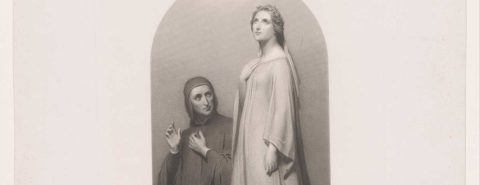 2021 sees the 700th anniversary of the death of poet Dante Alighieri. To mark this, we asked authors of some of our new publishing on Dante to write for the OUPblog.
2021 sees the 700th anniversary of the death of poet Dante Alighieri. To mark this, we asked authors of some of our new publishing on Dante to write for the OUPblog.For over 700 years, Dante’s description of his first encounter with Beatrice has scandalized readers. Medieval commentators debate Dante’s possible blasphemy in glorifying a mortal woman. Counter-reformation editors censor it. Some modern interpreters see it as a theological or political allegory without biographical foundation, while others consider it an idealized modern reciprocal romance. In Dante’s New Life of the Book, I examine how these various responses from Giovanni Boccaccio to Orhan Pamuk bring into focus the novelty of Dante’s Beatrice, who creates a connection to the divine that includes not only Beatrice, but all humans. Beatrice embodies Dante’s optimistic sense of human potentiality that provides the philosophical ground for the rewards and punishments of the Divine Comedy.
How Dante establishes this union of the fleshly and the divine has remained something of a mystery. “It appears likely, to anyone who reads the Vita Nuova without prejudice,” T. S. Eliot writes, “that it is a mixture of biography and allegory; but a mixture according to a recipe not available to the modern mind.” For centuries, scholars have tried to identify the conceptual basis for this combination. In the 14th century, Benvenuto da Imola called it allegory. In the 20th century, Erich Auerbach excavated the medieval term “figura.” These rhetorical and interpretive models do not, however, touch the ground on which Dante constructs his idea of Beatrice, which significantly builds on a quotation from Homer. Beatrice, Dante says, “was of such laudable and noble bearing that Homer’s words could surely be applied to her: ‘She seemed the daughter not of a mortal man, but of a god.’”
Modern readers since at least the 18th century have often assumed the Homeric passage describes Helen, the paragon of classical beauty, but Dante did not know the Homeric text directly. His knowledge of this Homeric passage derives instead from Aristotle’s Ethics where the Greek philosopher quotes Homer’s description of Hector as “not the son of a mortal, but of the gods.” For Aristotle, Homer’s Hector exemplifies the “superhuman virtue, a heroic and divine kind of virtue” that he contrasts to bestial degradation, just as he balances vice to virtue and incontinence to continence. With remarkable daring, Dante transforms Aristotle’s Homeric example of Hector’s heroic virtue into an eight-year-old Florentine girl, Beatrice. It is hard to imagine a better example of the Christian democratization of salvation that Peter Brown has identified. Making the Homeric hero into a Florentine girl, Dante expands access to the possibility of divination that Aristotle describes.
Because Dante remains identified in the modern imagination with infernal punishments, the positive impulse that guides his work is often forgotten. But Dante does not forget. When Virgil explains the logic of Hell’s structure, he reminds Dante of the same paragraph from Aristotle: “Don’t you remember those words with which your Ethics treats the three inclinations that Heaven rejects: incontinence, malice, and mad bestiality?” Commentators usually debate how these three terms map onto the terrain of hell without mentioning the complementary optimism that Aristotle expresses in it. Seeing the link to Beatrice’s glorification sheds new light on the motivations that shape Dante’s Hell, which is formed by the hope of salvation. Dante weeps not only at the suffering of the damned, but also their failure to fulfill this potential connection to divinity.
When a powerful institution talks about Hell, it wants to achieve social control. When the displaced poet devises Hell, he wants to imagine the justice that is missing from his lived experience. Dante’s exile may have fostered his concerns for non-Christian figures that Teodolinda Barolini has underlined, which includes both the virtuous pagans of antiquity, who are distant in time, and the man born on the banks of the Indus, who is distant in space. Although justice would not be served if all were saved, Dante’s vision of human is wider and more varied than is often thought. Punishing not only personal and political enemies, but also friends and teachers, Dante aims to restore justice.
Beatrice is not the singular, exclusive child of God. She represents all humans, whose souls God breathes directly into them (Purgatory, canto 25). Coming from God, all can return to God, fulfilling the circuit expressed in the appropriately palindromic English word “deified”: to be made into a god. Recent attempts to think about the “secular” show the radical strangeness of Dante’s vision of love. For these scholars, Dante’s vision of the Empyrean “obliterates” his love for Beatrice, which “gets leveled by the bliss of contemplating God.” These interpretations miss the collectivity of Dante’s vision. Individuals do not lose their identities as they become part of a greater whole. As Dante explains of the eagle in the heaven of Jupiter, or Justice, whose aquiline form is made up of many souls, whenever the eagle says “I” and “mine” it means “we” and “our.” Joining his love of a mortal woman with his love of God, Dante expands his vision to encompass other individuals as well. You may worry that Dante has put too much on the shoulders of an eight-year-old girl, but the real scandal of Dante’s Beatrice is that Dante thinks you can be Beatrice, too.
Feature image: Dante en Beatrice, Narcisse Lecomte, after Ary Scheffer, 1846 – 1855

The continuing appeal of religious politics in Northern Ireland
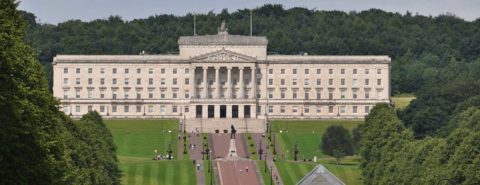
One of the most curious features of sudden-onset secularisation on the island of Ireland has been the revitalisation of religious politics. This is most obvious in Northern Ireland, where within the last three months, the chaotic introduction of the Brexit protocol, loyalist riots, and a controversy about banning so-called “gay conversion therapy” have been followed by dramatic declines in electoral support for and leadership changes within the largest unionist party that can only be described as chaotic.
First, the Democratic Unionist Party chose to replace the canny pragmatism of Arlene Foster with the religious fundamentalism and social conservatism of Edwin Poots. This was a very curious decision. Poots is controversial even among his own colleagues, for he appears to want to move in exactly the opposite direction to that of the cultural mainstream, and his appointment as DUP leader has been followed by announcements of several high-profile resignations from the party—including that of Arlene Forster herself. Then after 21 days as party leader, Poots fell victim to the same kind of plotting, and looks set to be followed by Sir Jeffrey Donaldson.
These leadership changes have a broader significance. The province that the DUP has fought to protect is at a tipping point, having returned at the last general election, for the first time in its 100-year history, more nationalist than unionist MPs. So, as unionism faces the prospect of becoming a political minority, which would raise the obvious possibility of a border poll, why is its most significant party tearing itself apart?
The truth is that the collapse of the DUP reflects the implosion of its traditional base of support. Of course, the fragmentation of unionism might not be immediately obvious. Almost 25 years since the Good Friday Agreement brought an end to the “troubles” that had resulted in over 3,000 deaths, politics in Northern Ireland has still to escape from its proxy purpose of providing a sectarian headcount. In large part, that is due to the institutions that were set up to enable power-sharing, the rules of which require that unionist and nationalist interests must be balanced and carefully preserved. Whatever the benefits for peace of this institutionalisation of difference, it has slowed down effective government, not least because of the difficulty of creating an effective opposition—which is, after all, a critical component in any democratic system. This long record of ineffective government explains why despite enormous subventions from Westminster the province endures some of the most abysmal records of social and economic achievement in Europe: statistics show that, in Northern Ireland, disposable income is half that of the UK average, children experience some of the worst health in western Europe and some of the UK’s highest rates of child poverty, and the number of suicides is three times that of the UK average. While these problems are structural, and affect those on both sides of the community, there is no doubt that educational underachievement is particularly obvious among protestants: while the majority of protestant-background school leavers who move into higher education do so in Britain, only one-third of whom ever return home, their working-class peers have returned the worst educational performance of any social group in the UK with the exception of Roma and travellers.
So there is an obvious demographic challenge that unionist politicians must address. Their traditional electorate is shipping out its younger talent, while supporting social structures that limit the opportunities of those who are left behind.
But it is not simply that the protestant-unionist-loyalist communities are declining in educational achievement at the same time as they are declining as a proportion of the population—they are also growing less religious. One of the most striking results of the last census was to indicate that the religious category that is growing most strongly in unionist—and stereotypically protestant—constituencies is that of non-belief.
All of this makes the DUP’s direction of travel seem ever more peculiar. As protestant-unionist-loyalist communities become smaller, less well educated, and less religious, the party’s traditional support base will continue to contract.
So why is this the right time for the party to move in the direction of old-fashioned religious politics? As secularisation takes the sting out of sectarianism, will the party that was founded by Ian Paisley be returning to the reactionary values of its past?
It’s easy to forget that politics is not a rational game, and that political strategists are often at the mercy of the more elemental, sometimes visceral, aspirations and emotions. Under Arlene Foster, the DUP moved to abandon its traditional religious commitments. Edwin Poots would likely have worked to renew his party’s older, and Paisleyite, vision of a socially conservative society. Sir Jeffrey Donaldson is likely somewhere between the two. But in the context of the trends that are refashioning his once-dominant community, his re-positioning of Northern Ireland’s largest unionist party may be too little and too late.
Featured image: public domain via pixabay.com

September 8, 2021
Two evil homonyms: “mother” and “haggard”

Not long ago, I wrote two short essays about homonyms (see the posts for 21 July and ). The comments were few but friendly, and I thought that a sequel to those essays might not be out of place.
MotherOne of the most puzzling English words is mother. It refers not only to the female parent but also to some substances. Perhaps the best-known terms related to the second sense are mother of pearl and mother of vinegar. Mother2 surfaced in English only in the sixteenth century and meant “scum, dregs, lees.” Obviously, we are not dealing with a spontaneous development of one of the oldest words in the language (mother “female parent” has cognates all over the Indo-European world). And indeed, its source is no secret: either Dutch or Low (= northern) German, but this reference does not explain the origin of Dutch moe(d)er (now moer) and German Mutter. Nor is this usage restricted to Germanic, because Spanish and Italian also have madreperla, while German Perlmutter may be known to some from the family name Per(e)lmuter.
Obviously, English will shed no light on the origin of this mother, and we should look at the continental forms. German Essigmutter “mother of vinegar” (Essig “vinegar”) and Moder ~ Modder “a decomposing corpse; swamp” are also late words. The beginning of the story must be in some northern German or Dutch dialects, and the search takes us away from the kin term, because in several Indo-European languages the root m-d/t is easy to find, and the words with it denote “urine, excrements,” and the like. Most probably, English mud belongs here too, but this fourteenth-century noun reveals no secrets. It only returns us to the same Low German and Dutch forms: mud is another version of moder, and after finding it, we are none the wiser.
 Clear as mud. (Via Wikimedia Commons.)
Clear as mud. (Via Wikimedia Commons.)When a Germanic word begins with the consonant m, one should always expect a double with sm– (that is, with the indispensable s-mobile), and of course, we find smut ~ smudge. This is another late word. However, smite is old, and it first meant “to smear.” I’ll refrain from stepping too deep into this morass (smut, smear, smolder, and the rest), but, wherever we turn, we find dirt, and it anyone’s guess whether smother also belongs here. If mother2 is a member of this filthy group, it has nothing to do with mother “female parent,” though the idea of equating “sediment,” that is, the bottommost layer of the substance with someone giving birth is tempting.
Such was the suggestion of the OED; it referred to the vocabulary of alchemy. In the formulation of The Concise Oxford Dictionary of English Etymology, the notion may have been that the substance was a portion of the mother, or original crude substance which remained mixed at first with the refined product. In Skeat’s formulation: “…as the dregs seem to be bred in the liquid,” the sense probably being affected by mud and muddle. (He said almost the same in the first edition of his dictionary.) But since mud is part of the same group, we cannot decide which of its elements affected which. Today, few researchers are ready to accept Skeat’s hypothesis. Indeed, more probably we are dealing with two unrelated words, that is, homonyms, but their interaction need not be excluded.
Haggard One would not call this hawk haggard. (Image by Radovan Zierik.)
One would not call this hawk haggard. (Image by Radovan Zierik.)Haggard is the name of an untamed hawk (thus, a noun) and an adjective meaning “lean, meager, gaunt, emaciated.” The question is the same as above: are we dealing with two meanings of the same old word or with two unrelated words? No records of English haggard antedate the sixteenth century, and there seems to be a consensus that, figuratively speaking, haggard1 and haggard2 are branches of the same tree, but I am aware of a difficulty never mentioned in our dictionaries (see below!). Haggard, applied to an untamed, wild hawk, appeared in English texts in the sixteenth century, and the adjective (“gaunt”) a hundred or so years later, and I think the relative chronology is important. The name of a wild hawk goes back to Old French. Its etymology is of little importance in the present discussion, and I’ll mention the existing hypotheses without discussion. Nearly all authorities derive the French word from Germanic: perhaps from English hawk (Old English hafoc, an old and universally rejected hypothesis) or from the Germanic root hag-, as in English hedge, haw, or Middle English hagger “wild; ugly.” The latest conjecture enjoys almost universal acceptance; if it is correct, French speakers are believed to have borrowed the word from English aristocrats. Falconry was indeed an aristocratic occupation.
In all those hypotheses, the Germanic origin of the French word remains uncontested. Yet French hagart (sic) “violent; unsociable” occurred as early as 1390 and the sense “uncertain; inconstant, changeable” even before that, both without reference to the falcon. Therefore, an attempt has been made to trace the French adjective to a Romance root, namely, Latin aversus “(literally) turned away; hostile; backwards” (a rather strained reconstruction). Though the distant origin of the French adjective is of no consequence for determining whether English haggard1 and haggard2 are one word or two, some background information is always useful. Among English etymologists the best specialist in things Romance was Ernest Weekley, who wrote in his dictionary: “Apparently from Old High German hag, hedge ‘haw’, whence French haie. As adjective, first applied to the eyes, later sense of gaunt, scraggy, due to the association with hag ‘witch’.” A bold interpretation of facts! Yet he too believed that the noun haggard and the adjective haggard go back to the same etymon, and there’s the rub.
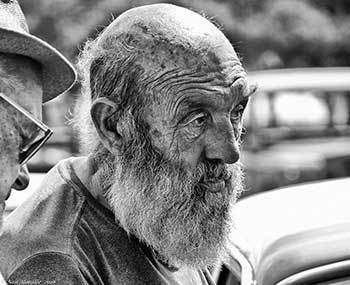 You wouldn’t call this haggard man hawkish. (Image by Neil Moralee.)
You wouldn’t call this haggard man hawkish. (Image by Neil Moralee.)German hager “gaunt” (another seventeenth-century word) means almost the same as English haggard, but in discussing it, no German dictionary mentions the English adjective, hawks, or French aristocrats. Nor does hager appear in English dictionaries featuring haggard. Hager, we read, is of “obscure origin”; and then possible cognates in Lithuanian and other remote languages are listed. The influence of mager “lean, skinny” is sometimes admitted as a distant possibility. Quite naturally, I wonder: “Does German hager have anything to do with the English adjective haggard”? Is haggard a “Frenchified” variant (the suffix –ard is French) of a Germanic word, even though it is of “obscure origin”? Is the association with the bird name secondary, a later product of folk etymology?
Most likely, we will never have an answer to this question, but I would not be surprised if the dictionaries of the future listed mother1 and mother2, along with haggard1 and haggard2, as unrelated words or if they at least mentioned this approach as worthy of discussion.
Feature image: Fertility goddess, Chandraketugarh, India, 2nd-1st century BC, terracotta – Ethnological Museum, Berlin. (CC0 1.0)

September 7, 2021
‘Look, I Overcame!’: contesting normative narratives with Dante’s Comedy
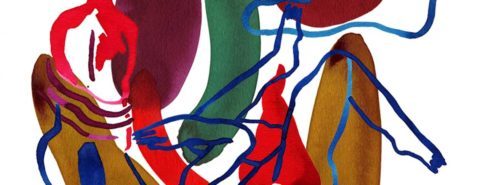 2021 sees the 700th anniversary of the death of poet Dante Alighieri. To mark this, we asked authors of some of our new publishing on Dante to write for the OUPblog.
2021 sees the 700th anniversary of the death of poet Dante Alighieri. To mark this, we asked authors of some of our new publishing on Dante to write for the OUPblog.Do comedies owe us a happy ending? When Dante called his masterpiece a “comedy” the explanation of his title was fairly straightforward. Comedies promise to guide us from difficult beginnings to happy endings:
And from this it is clear that the present work is to be described as a comedy. For if we consider the subject-matter, at the beginning it is horrible and foul, as being Hell; but at the close it is happy, desirable, and pleasing, as being Paradise.
(Epistle 13)
From Hell to Heaven—Dante’s poem is broadly structured on this comedic arc where the various challenges and epiphanies along the way trace an upward trajectory that culminates in the vision of transcendence. In Heaven, the protagonist defines his identity by his upward mobility:
I, who had come to the divine from humanity,
to eternity from time,
and from Florence to a people just and sane…
(Paradiso 31, italics mine)
This basic narrative arc is the masterplot of the Comedy. A number of important metaphorical discourses inform and sustain its trajectory throughout the poem. Images of pilgrimage and seafaring voyages, discourses of penitential progress, narratives of conversion, the myth of the righteous exile, each in their own way, suggest a tale of overcoming. In the seven centuries since Dante’s death in 1321, the narrative of overcoming has proven to be one of the greatest draws of Dante’s text, engaging and inspiring generations of readers and compelling many to imitate and elaborate Dante’s story in their own way. Famously, Dante’s daring journey of emancipation and self-knowledge was reworked in Primo Levi’s account of his internment at Auschwitz; it also inspired reflections on emancipation in the creative writings of African American writers such as Toni Morrison and Kamau Brathwaite. In the seventh-hundredth anniversary of its author’s death, the Comedy continues to spark films, videogames, graphic novels, music, art.
Dante was very aware of the power of his masterplot. For the writer of the Commedia, configuring his fiction as a path from past error to newfound knowledge and spiritual freedom has the remarkable practical advantage of fashioning its author as an authority. The uplifting masterplot of the Comedy is carefully designed for the purpose of investing its author with a mandate to speak truth to power. The poem makes Dante’s overcoming visible for all in order to purchase him such authority. The journey, he claims, made him “free, righteous, and sane” (Purgatorio 30).
But there’s the rub. Feminist philosopher Robin James in Resilience & Melancholy: Pop Music, Feminism, Neoliberalism critiques resilience narratives of this kind, which she calls “Look, I Overcame!”. They can empower but they can also burden, the moment they become normative. When overcoming is turned into a moral imperative, “Look, I Overcame!” stories can also be used to shame those who were not able or fortunate enough to overcome. Hegemonic power can use the stories of those who have overcome adversity to reject responsibility for, and even justify, the systemic social and political injustices of the status quo. The blame is shifted on the vulnerable with the implicit reproach: “Why are you not overcoming?”.
Dante’s Comedy can be read as a carefully “curated story” in the genre of “Look, I Overcame!”. Yet for all its investment in crafting authority out of its comedic trajectory, Dante also shows remarkable sensitivity to the fact that overcoming cannot be expected to be the norm. Normative readings of the Comedy tend to stress the narrative of development and authority making it the measure of interpretation; however, a whole host of alternative storylines in the poem counters that emphasis with a kinder appreciation of failure, interruption, incompleteness, errantry, and vulnerability. These are as many reminders of the important fact that even Dante’s comedy could have ended tragically. These alternative stories in the poem show how the exceptionalist “Look, I Overcame!” narrative is only really possible in retrospect, as the curated story of those who happened to have survived. The poem’s appreciation to alternative outcomes is a reminder that no a-priori merit distinguishes those who will be able to overcome from those who will not be so lucky. The overcoming that in retrospect appears as predestination was once open and uncertain for them too.
Indeed, Dante had occasion to reflect on the mechanism of victim-blaming that inevitably affects those who fail to overcome. The final twenty years of his life were spent in exile from Florence and condemned him to meander across Italy’s courts in hope of patronage, putting his poetic enterprise at risk. In the Comedy, Dante reflects that “Blame will loudly follows those who have been wronged, as usual” (Paradiso 17). It is a fact that despite its comedic promises, the poem did not afford its author a happy ending. Dante Alighieri never returned to Florence as he had prophesied in his fiction but died an exile.
There is a tyranny to narratives of overcoming and the expectation of happy endings. They can saddle the living with the burden to have already overcome while obscuring inequalities in opportunity. The opportunity can only ever belong to those who have the privilege (and live) to tell the tale: it is not a chance that the “Look, I Overcame!” narrative is a favoured myth of meritocracy. At a time where “curated storytelling” is “being reconfigured on the model of the market to produce entrepreneurial, upwardly mobile subjects and is leveraged toward strategic and measurable goals driven”, Dante’s Comedy has a lot to teach not only about escaping Hell, but also about the insult that is added to the injury of the vulnerable when they are expected to prove their worth before they can be heard.
Feature image: “Between the lines” by Elke Foltz

From La Source to Cold War cultural diplomacy, seven books on ballet [reading list]

From its origins in the Renaissance, ballet has evolved in various distinct ways, with different schools around the globe incorporating their own cultures. As a widespread and highly technical form of dance, ballet has been influential globally and forms the foundations of many other dance genres.
Explore some of our recent titles that look at the history (and future) of ballet, consider some of its influential figures, and the role it played in Cold War cultural diplomacy.
The Oxford Handbook of Contemporary Ballet edited by Kathrina Farrugia-Kriel and Jill Nunes JensenCompared to existing histories of ballet, The Oxford Handbook of Contemporary Ballet prioritizes connections between ballet communities as it interweaves chapters by scholars, critics, choreographers, and working professional dancers. The book looks at the many ways ballet functions as a global practice in the 21st century, providing new perspectives on ballet’s past, present, and future.
Read The Oxford Handbook of Contemporary Ballet
Ruth Page: The Woman in the Work by Joellen A. Meglin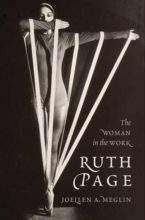 In Ruth Page, the Chicago ballerina emerges as a highly original choreographer who, in her art, sought the iconoclastic as she transgressed boundaries of genre, gender, race, class, and sexuality. Author Joellen A. Meglin shows how Page’s works were often controversial and sometimes censored even as she succeeded in roles usually reserved for men in the ballet world: choreographer, artistic director, and impresario.
In Ruth Page, the Chicago ballerina emerges as a highly original choreographer who, in her art, sought the iconoclastic as she transgressed boundaries of genre, gender, race, class, and sexuality. Author Joellen A. Meglin shows how Page’s works were often controversial and sometimes censored even as she succeeded in roles usually reserved for men in the ballet world: choreographer, artistic director, and impresario.
Read Ruth Page: The Woman in the Work
One Dead at the Paris Opera Ballet: La Source 1866-2014 by Felicia McCarrenOne Dead at the Paris Opera Ballet takes readers to four historic performances, over 150 years, showing how—through the sacrifice of a feminized Nature—the ballet La Source represented the biopolitics of sex and race, and the cosmopolitics of human and natural resources. This recent addition to the Oxford Studies in Dance Theory series includes new archival research from the Paris Opera Ballet and offers perspectives from cultural history, biopolitics and gender performativity, as well as cosmopolitical eco-criticism.
Read One Dead at the Paris Opera Ballet: La Source 1866-2014
Ballet Class: An American History by Melissa R. Klapper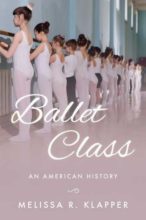 Surveying the state of American ballet in a 1913 issue of McClure’s Magazine, author Willa Cather reported that few girls expressed any interest in taking ballet class and that those who did were hard-pressed to find anything other than dingy studios and imperious teachers. One hundred years later, ballet is everywhere. Ballet Class explores the growth of ballet from an ancillary part of 19th century musical theatre, opera, and vaudeville to the quintessential extracurricular activity it is today, pursued by countless children and an integral part of 20th century American childhood across borders of gender, class, race, and sexuality.
Surveying the state of American ballet in a 1913 issue of McClure’s Magazine, author Willa Cather reported that few girls expressed any interest in taking ballet class and that those who did were hard-pressed to find anything other than dingy studios and imperious teachers. One hundred years later, ballet is everywhere. Ballet Class explores the growth of ballet from an ancillary part of 19th century musical theatre, opera, and vaudeville to the quintessential extracurricular activity it is today, pursued by countless children and an integral part of 20th century American childhood across borders of gender, class, race, and sexuality.
Read Ballet Class: An American History
Catherine Littlefield: A Life in Dance by Sharon SkeelWhile she is best remembered today as founder of the Philadelphia Ballet and the director and driving force behind the famous Littlefield School of Ballet, from which Balanchine drew the nucleus for his School of American Ballet, Catherine Littlefield (1905-51) and her oeuvre were in many ways emblematic of the full representation of dance throughout entertainments of the first half of the 20th century. From her early work as a teenager dancing for Florenz Ziegfeld to her later work in choreographing extravagant ice-skating shows, Littlefield was amongst the first choreographers to bring concert dance to broader venues, and her legacy lives on today in her enduring influence on generations of American ballet dancers.
Read Catherine Littlefield: A Life in Dance
Ballet in the Cold War: A Soviet-American Exchange by Anne Searcy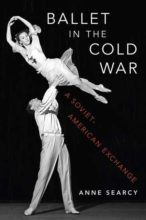 In 1959, the Bolshoi Ballet arrived in New York for its first ever performances in the United States. The tour was part of the Soviet-American cultural exchange, arranged by the governments of the US and USSR as part of their Cold War strategies. The tours created space for genuine appreciation of foreign ballet but also led to a series of deep misunderstandings. Drawing on both Russian- and English-language archival sources, Ballet in the Cold War demonstrates that the separation between Soviet and American ballet lies less in how the ballets look and sound, and more in the ways that Soviet and American viewers were trained to see and hear. It suggests new ways to understand both Cold War cultural diplomacy and 20th century ballet.
In 1959, the Bolshoi Ballet arrived in New York for its first ever performances in the United States. The tour was part of the Soviet-American cultural exchange, arranged by the governments of the US and USSR as part of their Cold War strategies. The tours created space for genuine appreciation of foreign ballet but also led to a series of deep misunderstandings. Drawing on both Russian- and English-language archival sources, Ballet in the Cold War demonstrates that the separation between Soviet and American ballet lies less in how the ballets look and sound, and more in the ways that Soviet and American viewers were trained to see and hear. It suggests new ways to understand both Cold War cultural diplomacy and 20th century ballet.
Read Ballet in the Cold War: A Soviet-American Exchange
The Fascist Turn in the Dance of Serge Lifar: Interwar French Ballet and the German Occupation by Mark FrankoUkrainian dancer and choreographer Serge Lifar (1905-86) is recognized both as the modernizer of French ballet in the twentieth century and as the keeper of the flame of the classical tradition upon which the glory of French ballet was founded. The Fascist Turn in the Dance of Serge Lifar is the first book not only to discuss the resistance to Lifar in the French press at the start of his much-mythologized career, but also the first to present substantial evidence of Lifar’s collaborationism and relate it to his artistic profile during the preceding decade.
Read The Fascist Turn in the Dance of Serge Lifar: Interwar French Ballet and the German Occupation
Feature image: Swan Lake Japanese Ballet Dancer by Gang Hao. Public domain via Unsplash.

September 5, 2021
Super takes off

Superman has been around for more than eighty years. The word super been a part of English much longer. It was borrowed into English from Latin, and in Old English we already find the word superhumerale to refer to a religious garment worn over the shoulders.
The earliest OED citation of super applied to people is from 1599 and refers to women and their “… super humane and angelicall natures.” This reference to metaphoric divinity is not quite superhuman, but already we begin to see the meaning of super extended to human qualities above the ordinary.
The expression super-man came into vogue in the late nineteenth century, with the sense of divinity replaced by ideas of destiny and evolution. The OED gives a citation from an 1894 article by Granville Stanley Hall, which referred to “the ‘cosmic, super-man’ of the future,” with its nod to Nietzsche’s übermensch. And George Bernard Shaw, of course, popularized the term further in his 1903 play “Man and Superman,” which dealt with marriage and evolution.
Around this time too, we begin to hear of superheroes and superheroines, albeit without invulnerability, X-ray vision, and the power of flight. In 1899, a report on the Dreyfus affair commented that “if Colonel Picquart is a hero, Mathieu Dreyfus [Alfred’s brother] is a super-hero,” and a 1910 Texas newspaper reported that Florence Nightingale’s “last days were passed quietly in the friendly seclusion that a respectful public allows only to its super-heroines.”
Superman, of course, came to be the name of the infant refugee from the dying world of Krypton. Jerry Siegel and Joe Shuster first used the name Superman in a 1933 fanzine piece the two published. They later sold the character to Detective Comics, where the son of Krypton appeared in Action Comics #1 in 1938. Superman quickly received his own title as well as a daily newspaper comic strip launched in 1939, a radio show in 1940, and a 15-part serial film released in 1948. As the word superhero shifted to refer to comic book characters with extraordinary powers, supervillain also shifted from meaning “extremely villainous” to a fictional villain with superhuman powers.
Super was evolving in other ways as well. The OED cites early entries for supermarkets in 1931 and 1933 in reference to large self-service chain stores selling food and other goods. By the 1950s, supermarket was being used to refer more broadly to enterprises with many products, and Life magazine could describe the “the gleaming TV supermarkets of Hollywood and New York.” Supermarkets later gave us superstores, reflecting an increase in scope, and the verb super-size. We find it in supertankers, superhighways, and superfoods, the last a bit of marketing puffery rather than a description of a food group with specific nutritional properties.
As for super flying solo, the word had long been an adjective, occurring even in the Pickwick Papers, where Samuel Weller tells Mr. Smangles, “I’ll be upon the wery best extra-super behaviour!” Super became used as an adverb from about the 1970s, and since the 1990s, the adverbial use has taken off. It’s easy to hear examples like “I was super into them,” “I’m super tired,” “Hold it super tight,” “I super hate to drive in the city,” or “I super like linguistics.” Some people don’t like this adverbial use of super—I turned up my nose at first—but now I smile inside when I hear someone say they are super excited.
Super has evolved from a Latin prefix designating “over” to an adjective and now an adverb. It has designated divinity, exceptionality, superiority, extra-human powers, greater than normal size, and serves as an all-purpose positive expression, synonymous with great and really and very.
You might say it’s super.
Featured image: “Icons of Science Fiction Exhibit” by Roland Tanglao. CC BY 2.0 via Wikimedia Commons.

September 3, 2021
The hedging henchman and his hidden horse
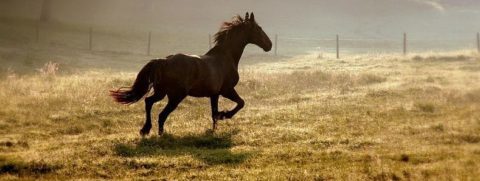
 These are the Heinzelmännchen of German folklore. The source of henchmen? (Image: Palmer Cox’s “The Brownies” reading a book, from “The Palmer Cox Brownie Primer” via Wikimedia Commons)
These are the Heinzelmännchen of German folklore. The source of henchmen? (Image: Palmer Cox’s “The Brownies” reading a book, from “The Palmer Cox Brownie Primer” via Wikimedia Commons)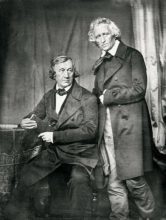 Wilhelm and Jacob Grimm, 1847 (Image: Daguerreotype by Hermann Blow via Wikimedia Commons)
Wilhelm and Jacob Grimm, 1847 (Image: Daguerreotype by Hermann Blow via Wikimedia Commons) A military marshal. A long way from a mare-servant! (Image: Uniform of a Russian General-fieldmarshal (1793) via Wikimedia Commons)
A military marshal. A long way from a mare-servant! (Image: Uniform of a Russian General-fieldmarshal (1793) via Wikimedia Commons)Feature image: Running Horse via Wikimedia Commons

August 31, 2021
The power of words [podcast]
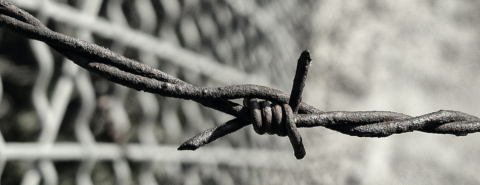
We’re all familiar with the phrase “words have power” but in a political and cultural climate where we become more aware of the power that money, influence, and privilege have every day, how do people wield the power of words?
This month we spoke with philosopher Myisha Cherry, author of the upcoming OUP book The Case for Rage: Why Anger is Essential to Anti-Racist Struggle, and Unmuted: Conversations on Prejudice, Oppression, and Social Justice, and poet Carmen Bugan—whose book Poetry and the Language of Oppression: Essays on Politics and Poetics is available now—to talk about how they see their disciplines addressing the questions of language, oppression, and resistance, and exactly what tools the arts and humanities provide to address injustice.
Both scholars approach this question from their own unique positions—Myisha Cherry studies the philosophy of emotion as motivation and her recent work looks at how we see that expressed through the American Black Lives Matter movement. Carmen Bugan began writing poetry in response to her childhood growing up the daughter of a political prisoner in Romania during the Cold War.
Check out Episode 64 of The Oxford Comment and subscribe to The Oxford Comment podcast through your favourite podcast app to listen to the latest insights from our expert authors.
Oxford Academic (OUP) · The Power of Words – Episode 64 – The Oxford CommentRecommended readingIn the episode, we discuss Myisha Cherry’s piece for the Atlantic, “Anger Can Build a Better World.” Myisha has contributed to a number of new and upcoming titles from OUP including The Movement for Black Lives: Philosophical Perspectives and Philosophy for Girls: An Invitation to the Life of Thought. You can read her chapter in the collected volume Philosophy for Girls, “Anger: Embracing the Medusa Trope as an Act of Resistance,” as well her article from the Oxford Handbook of Philosophy and Race, “State Racism, State Violence, and Vulnerable Solidarity.”
For further exploration into the philosophy of emotions, read Why Be Emotional? by Sabine A. Doring.
To learn more about Carmen Bugan’s work, enjoy the final essay from Poetry and the Language of Oppression, “Writing in Turbulent Times,” which looks at the politics of freedom and explores how literature and language can celebrate humanity. You can also read a full account of her childhood and how it influenced her poetry in her article for the BBC, “How the secret police tracked my childhood.”
And to learn more about some of the Eastern European resistance poets discussed on the podcast, read Czeslaw Milosz: A Testament of Exile, Joseph Brodsky: A “Peremptory Trust in Words”, and, finally, The Political Culture of a Poet from Mandelstam’s Worlds: Poetry, Politics, and Identity in a Revolutionary Age.
*All chapters and articles will be free-to-read through the third week of November
Featured image: Photo by Marco Bianchetti on Unsplash.

August 30, 2021
Why were Finnish schools so successful with distance and in-person learning during the pandemic?

On 18 March 2020, schools in Finland closed. On 14 May 2020, they reopened successfully. Why was Finland successful in transitioning to distance education and then back to face-to-face learning and teaching?
There is an a priori answer. Finns have a view of education and learning that often contradicts common wisdom (such as worrying less about the standardized performance of children and teachers’ accountability) to truly serve the wellbeing of children by empowering the highly selective and trained teacher force with trust.
Finns are passionate about face-to-face education even in the age of technology-driven educational services. They have invested heavily in new or refurbished twenty-first century superschools, which create superb and highly resourced teaching and learning environments that facilitate the face-to-face and digital interactions between teachers and students. Together with a serendipitous policy mix of national, local, and school decisions, the school is no longer only a place to teach and learn subjects but also a phenomenon where the whole learning experience and children’s growth occur. They put a lot of effort into making sure that the children feel safe under a relaxed culture of interaction between students and teachers.
The Finns have invested in two structural foundations to facilitate the pedagogic interaction: a powerful teaching force and a technological infrastructure (sound broadband internet access and educational tools so that teachers can navigate different pedagogic proposals and environments). They have reduced the number of smaller, less well-resourced schools, and instead, they have established large superschools to house more resources for many students. Fewer, well-resourced schools, rather than many low-resourced schools, is one of their key ideas.
Digitalization in schools followed digitalization in life—but schools went one step further. More screen time is not learning. Therefore, Finnish schools decided to provide digital access for everyone and train teachers and students with skills on how to use this technology for learning and wellbeing. They don’t force digitalization but make sure that if teachers and students want to explore digital means, all the schools are ready for them.
Since collaboration among all school agents (teachers, students, and parents) has always been essential in the Finnish model of education, and since the society and parents have a high value of education (for example, the teaching profession is one of the most highly demanded fields of university studies by high school students), it was not very difficult for schools and teachers to communicate with parents and students during the pandemic.
The pandemic accelerated the turn-of-the-century trends: more digitalization, flexible technology, teamwork, and a focus on the wellbeing of students and teachers. So, what should we expect in the future? In the short term, new spaces for outdoor activities, more digital skills, more constant formative evaluations for students, and more strategic planning for future crises in the long term.
Here are the key learnings shared by Finnish teachers, experts, and principals during the pandemic:
The need to keep the information and communication channels open and frequent among all people.The need to bring the newly acquired skills into daily lives, perhaps with remote sessions once a week or per school term, as modern technology companies do.The knowledge that we are living, in part, the normality of the future.The pandemic is a phenomenon with solid consequences: loneliness kills.A school is a place to learn academic skills and, perhaps more importantly, grow and share with others. A school is a place where one can safely fail and recover.Teachers took a tremendous digital leap.The majority opinion seems to be that closing schools hurt students.Face-to-face teaching and learning is the correct form of education and deep learning.Although the pandemic has driven the digital leap at all educational levels, the coronavirus will not change school curricula. The issue is how to approach rather than change the school curricula.Education has been, and continues to be, the number one priority in Finland.When everyone (students, parents, teachers, community) works together, we can get the best results.Lifelong learning is not just a phrase; it is a necessity for every one of us.Face-to-face education is so important to achieve. Digitalization is an instrument, a means to an end. Digital technology complements the work of teachers. The dual vision of digital preparedness and children’s wellbeing, backed by the already-in-place teachers’ pedagogic command, facilitated the successful transition back and forth between distance and face-to-face learning during the 2020-2021 coronavirus crisis.

Oxford University Press's Blog
- Oxford University Press's profile
- 238 followers



